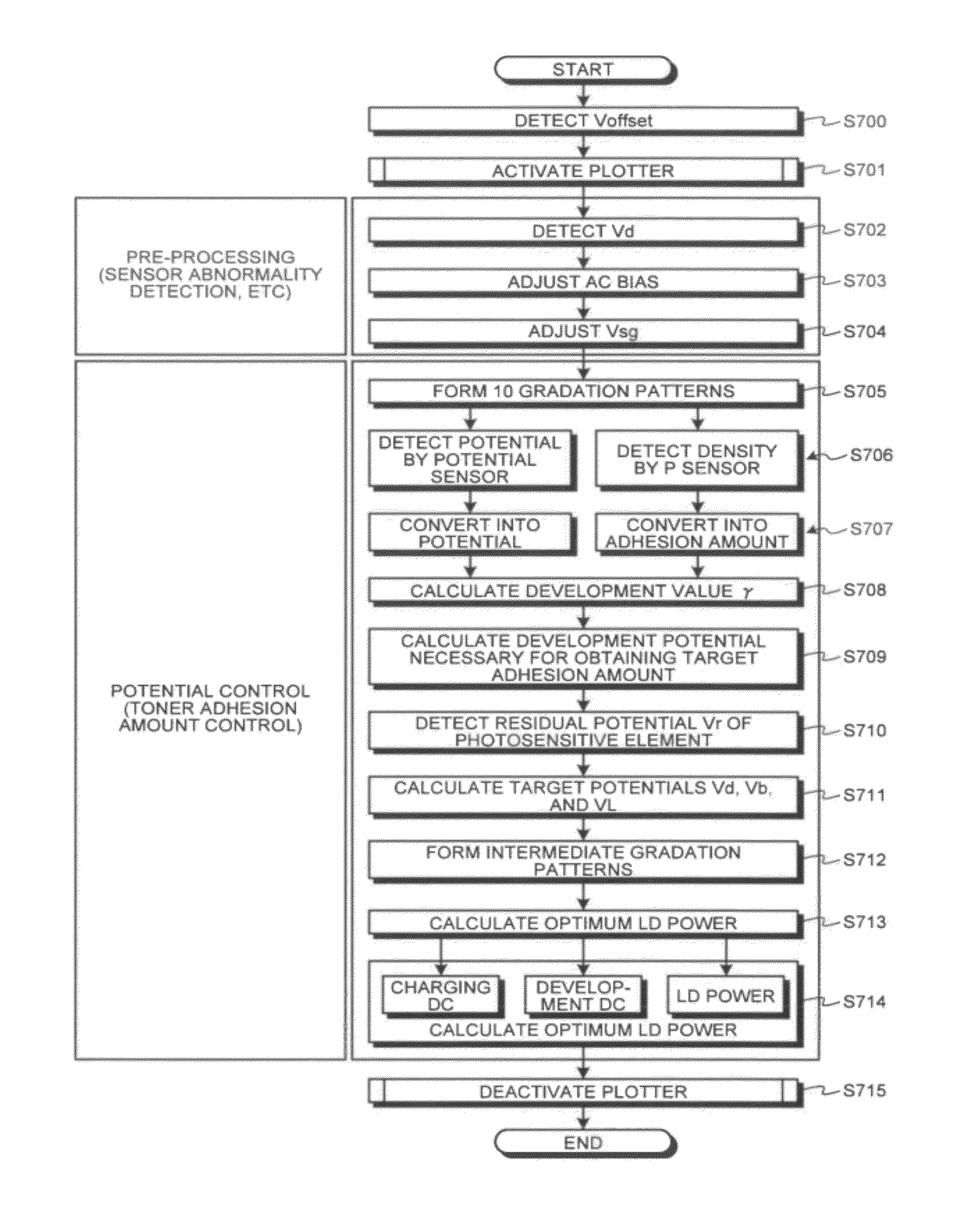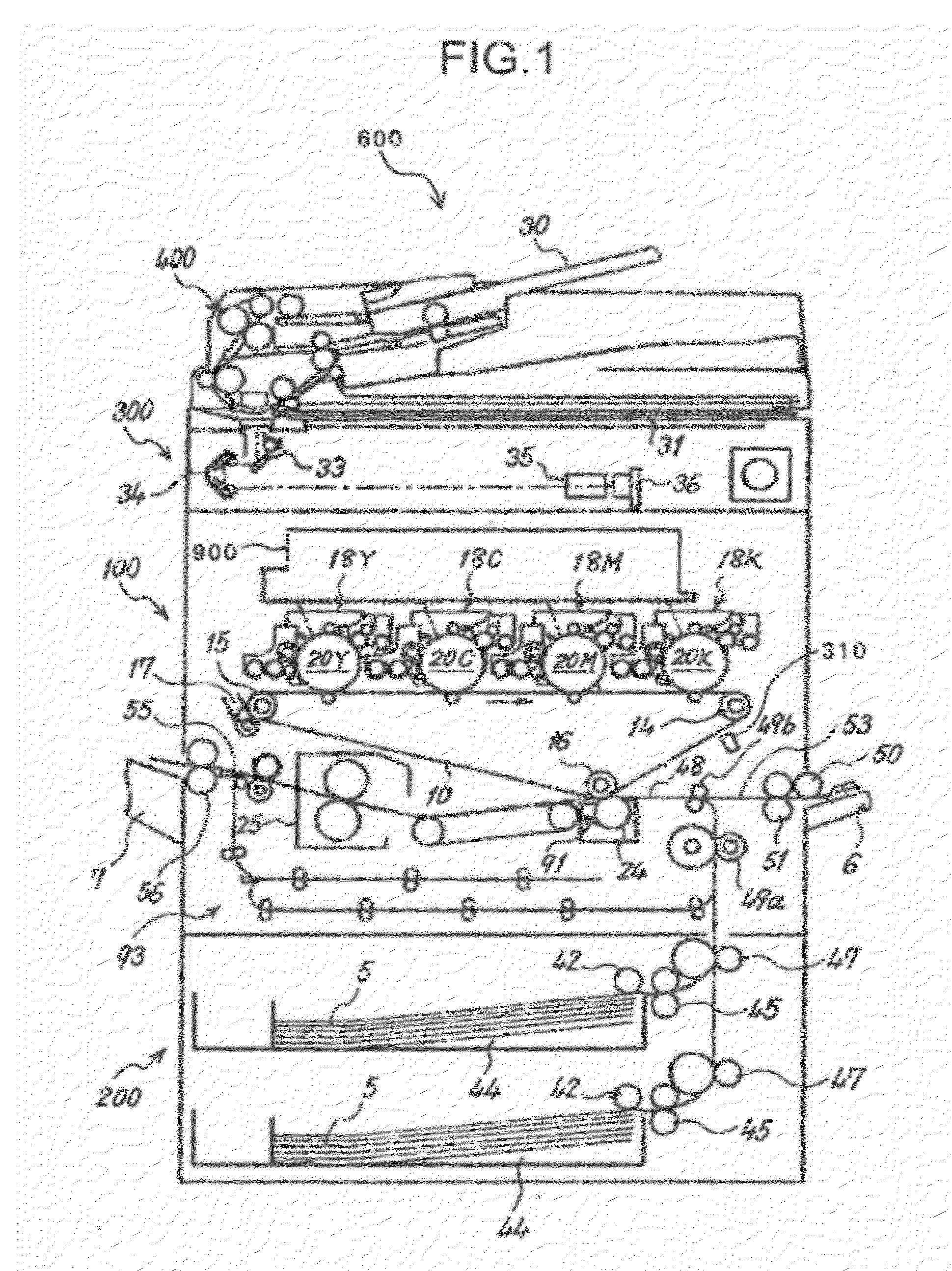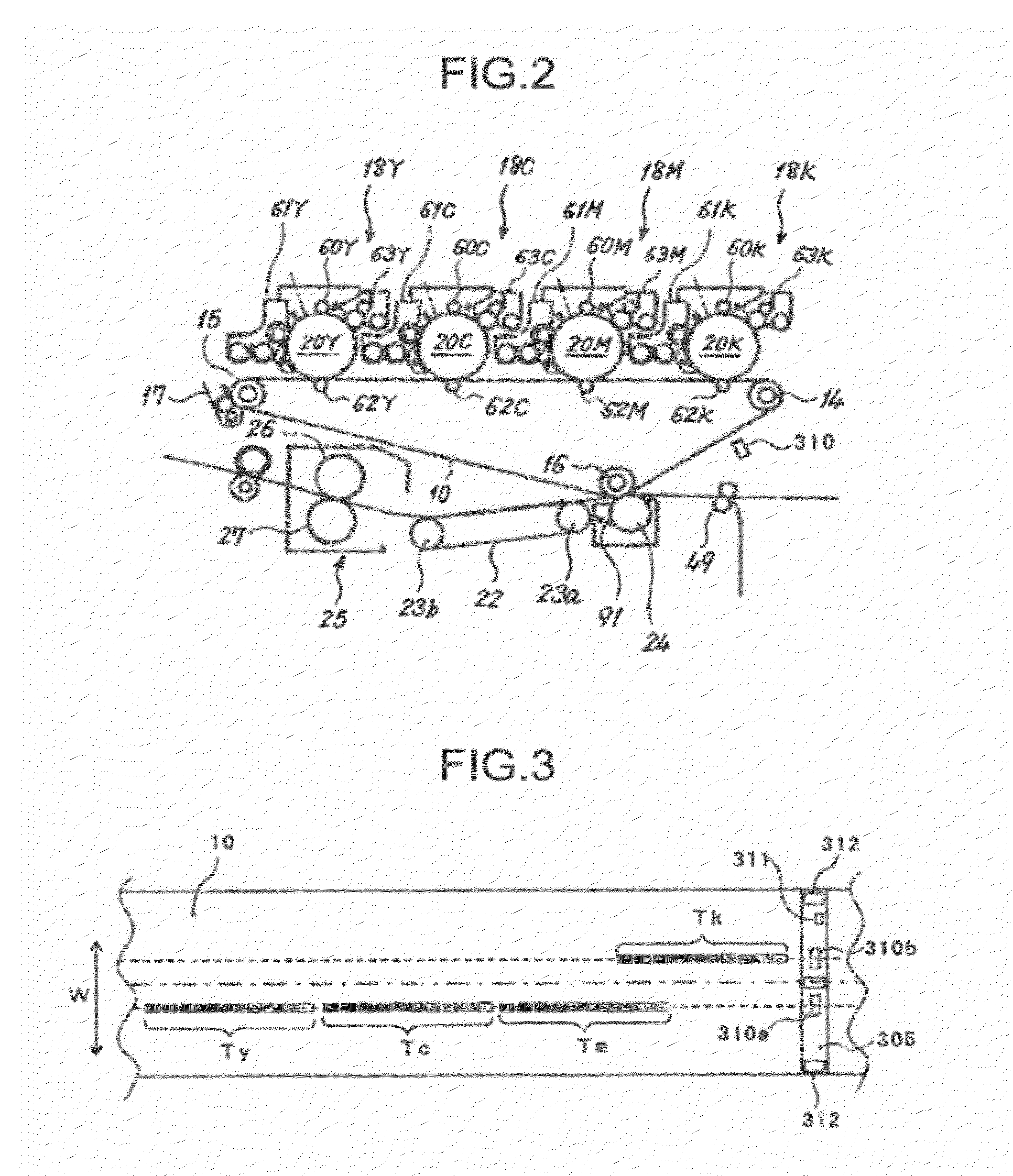Image forming apparatus
a technology of forming apparatus and forming dot, which is applied in the direction of electrographic process apparatus, instruments, optics, etc., can solve the problems of reducing the number of gradation levels per dot controllable by density gradation control, difficulty in increasing resolution, and time-consuming for performing
- Summary
- Abstract
- Description
- Claims
- Application Information
AI Technical Summary
Benefits of technology
Problems solved by technology
Method used
Image
Examples
embodiment 1
[0175]A titanyl phthalocyanine crystal was prepared in accordance with Embodiment 1 of Japanese Patent Application Laid-open No. 2004-83859. That is, 292 parts of 1,3-diiminoisoindoline and 1800 parts of sulfolane were mixed, and 204 parts of titanium tetrabutoxide was dropped to the mixture under nitrogen gas stream. After the dropping, the mixture was gradually heated to 180° C., and a reaction temperature was kept to be in the range between 170° C. and 180° C. while the mixture was stirred for five hours for causing a reaction. After the reaction, the mixture was cooled down and then filtered to obtain a precipitation. The precipitation was washed with chloroform until the precipitation became blue powder, and then the precipitation was washed with methanol several times. The precipitation was further washed with hot water at 80° C. several times and dried to obtain pre-purified titanyl phthalocyanine. 60 parts of the obtained pre-purified titanyl phthalocyanine pigment having be...
first modification
[0297
[0298]Next, a modification (hereinafter referred to as a “first modification”) in which a configuration of an exposing unit 900 and of a multi-gradation patch pattern used for image density adjusting control will be described.
[0299]The light source 914 of the first modification includes the two-dimensional array 901 in which forty light-emitting portions 101 are formed on one substrate similarly to the above embodiment. However, in the first modification, the spacing (ds2 in FIG. 10) between adjacent rows of light-emitting portions in the Dir_sub direction is 24.0 μm, and the spacing (d1 in FIG. 10) of light-emitting portions in the T direction in each row of light-emitting portions is 24.0 μm. Moreover, when each of the light-emitting portions 101 is orthogonally projected on an imaginary line extending in the Dir_sub direction, the spacing (ds1 in FIG. 10) between light-emitting portions 101 becomes 2.4 μm.
[0300]FIG. 57 illustrates still another formation example (hereinafter...
second modification
[0305
[0306]Next, another modification (hereinafter referred to as a “second modification”) on a configuration of the exposing unit 900 and a multi-gradation patch pattern used for image density adjusting control will be described.
[0307]The light source 914 of the second modification includes a 4-channel LD array of a so-called end-emitting type that emits light in a direction parallel to the substrate surface rather than using the two-dimensional array of the above embodiment (a VCSEL-type light source that emits light in a direction perpendicular to the substrate surface). In the second modification, as shown in FIG. 58, the spacing (ds in FIG. 58) between adjacent rows of light-emitting portions in the Dir_sub direction is 9.6 μm.
[0308]The multi-gradation patch pattern of the second modification is also a 10-gradation pattern similarly to the above embodiment with a difference lying in that the writing density of the former is 1200 [dpi]×1200 [dpi]. Moreover, 10 patches having dif...
PUM
 Login to View More
Login to View More Abstract
Description
Claims
Application Information
 Login to View More
Login to View More - Generate Ideas
- Intellectual Property
- Life Sciences
- Materials
- Tech Scout
- Unparalleled Data Quality
- Higher Quality Content
- 60% Fewer Hallucinations
Browse by: Latest US Patents, China's latest patents, Technical Efficacy Thesaurus, Application Domain, Technology Topic, Popular Technical Reports.
© 2025 PatSnap. All rights reserved.Legal|Privacy policy|Modern Slavery Act Transparency Statement|Sitemap|About US| Contact US: help@patsnap.com



